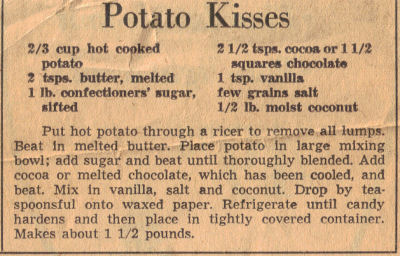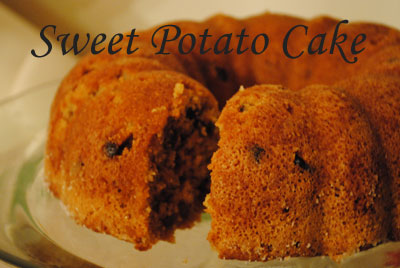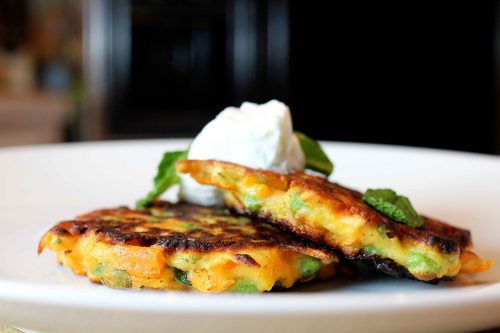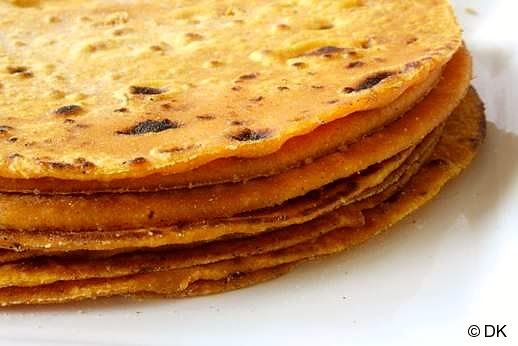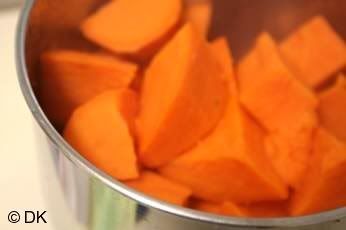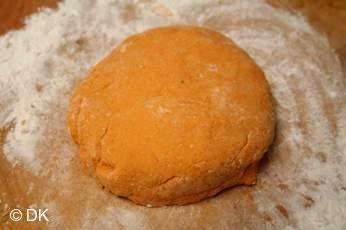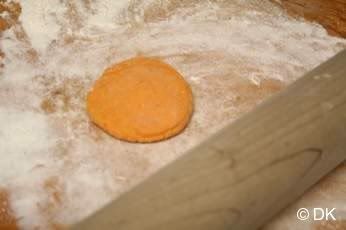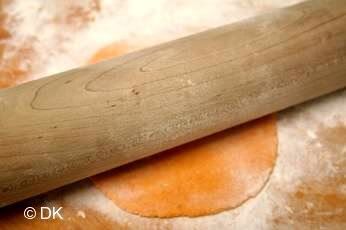sister herb
Official TTI Chef

The sweet potato (Ipomoea batatas) is a dicotyledonous plant that belongs to the family Convolvulaceae. Its large, starchy, sweet-tasting, tuberous roots are a root vegetable. The young leaves and shoots are sometimes eaten as greens. Ipomoea batatas is native to the tropical regions in America. Of the approximately 50 genera and more than 1,000 species of Convolvulaceae, I. batatas is the only crop plant of major importance—some others are used locally, but many are poisonous. The sweet potato is only distantly related to the potato (Solanum tuberosum) and does not belong to the nightshade family.

The genus Ipomoea that contains the sweet potato also includes several garden flowers called morning glories, though that term is not usually extended to Ipomoea batatas. Some cultivars of Ipomoea batatas are grown as ornamental plants; the name "tuberous morning glory" may be used in a horticultural context.
The plant is a herbaceous perennial vine, bearing alternate heart-shaped or palmately lobed leaves and medium-sized sympetalous flowers. The edible tuberous root is long and tapered, with a smooth skin whose color ranges between yellow, orange, red, brown, purple, and beige. Its flesh ranges from beige through white, red, pink, violet, yellow, orange, and purple. Sweet potato varieties with white or pale yellow flesh are less sweet and moist than those with red, pink or orange flesh.
In certain parts of the world, sweet potatoes are locally known by other names. In New Zealand English, the Māori term kūmara (also spelled kūmera) is commonly used. Although the soft, orange sweet potato is often called a "yam" in parts of North America, the sweet potato is botanically very distinct from a genuine yam (Dioscorea), which is native to Africa and Asia and belongs to the monocot family Dioscoreaceae. To add to the confusion, a different crop plant, the oca, Oxalis tuberosa (a species of woodbind), is called a "yam" in many parts of Polynesia, including New Zealand. To prevent confusion, the United States Department of Agriculture requires sweet potatoes labeled as "yams" to also be labeled as "sweet potatoes". The sweet potato is North Carolina's state vegetable.
The origin and domestication of sweet potato is thought to be in either Central America or South America.
In Central America, sweet potatoes were domesticated at least 5,000 years ago. In South America, Peruvian sweet potato remnants dating as far back as 8000 BC have been found.
One author postulated that the origin of I. batatas was between the Yucatán Peninsula of Mexico and the mouth of the Orinoco River in Venezuela. The 'cultigen' had most likely been spread by local people to the Caribbean and South America by 2500 BC. Strong supporting evidence was provided that the geographical zone postulated by Austin is the primary center of diversity. The much lower molecular diversity found in Peru–Ecuador suggests this region should be considered as secondary center of sweet potato diversity.
The sweet potato was also grown before western exploration in Polynesia. Sweet potato has been radiocarbon-dated in the Cook Islands to 1000 AD, and current thinking is that it was brought to central Polynesia around 700 AD, possibly by Polynesians who had traveled to South America and back, and spread across Polynesia to Hawaii and New Zealand from there. It is possible, however, that South Americans brought it to the Pacific, although this is unlikely as it was the Polynesians who had a strong maritime tradition and not the native South Americans. The theory that the plant could spread by floating seeds across the ocean is not supported by evidence. Another point is that the sweet potato in Polynesia is the cultivated Ipomoea batatas, which is generally spread by vine cuttings and not by seeds.
Sweet potatoes are now cultivated throughout tropical and warm temperate regions wherever there is sufficient water to support their growth, including regions of China. Sweet potatoes were introduced as a food crop in Japan, and by 1735 was planted in Shogun Tokugawa Yoshimune's private garden. It was also introduced to Korea in 1764.
According to the Food and Agriculture Organization (FAO) statistics, world production in 2004 was 127 million tonnes. The majority comes from China, with a production of 105 million tonnes from 49,000 km2. About half of the Chinese crop is used for livestock feed.
Per capita production is greatest in countries where sweet potatoes are a staple of human consumption, led by Papua New Guinea at about 500 kg per person per year, the Solomon Islands at 160 kg, Burundi and Rwanda at 130 kg and Uganda at 100 kg.
About 20,000 tonnes of sweet potatoes are produced annually in New Zealand, where sweet potato is known by its Māori name, kūmara. It was a staple food for Māori before European contact.
Nutrient content
Besides simple starches, raw sweet potatoes are rich in complex carbohydrates, dietary fiber and beta-carotene (a provitamin A carotenoid), while having moderate contents of other micronutrients, including vitamin B5, vitamin B6, manganese and potassium. When cooked by baking, small variable changes in micronutrient content occur to include a higher content of vitamin C at 24% of the Daily Value per 100 g serving, as well as an increase in polyphenol levels.
The Center for Science in the Public Interest has compared the nutritional value of sweet potatoes to other foods. Considering fiber content, complex carbohydrates, protein, vitamin A and potassium, the sweet potato ranked highest in nutritional value.
Sweet potato varieties with dark orange flesh have more beta carotene than those with light-colored flesh, and their increased cultivation is being encouraged in Africa, where vitamin A deficiency is a serious health problem. A 2012 study of 10,000 households in Uganda found that 50% of children who ate normal sweet potatoes suffered from vitamin A deficiency compared with only 10% of those on the high beta carotene variety.

